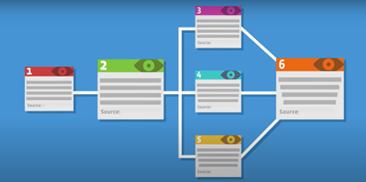Introduction
Desk research is a research technique carried out using secondary sources of information, i.e., information that has already been collected and published by other individuals or institutions (books, magazines, newspapers...).
Desk research
Desk Research.
Description
What is this technique/tool about
This tool is very useful in the first stage when investigating a topic because it allows us to know what has been done before, how, and where. It is important to keep in mind that desk research does not provide original primary information but is based on what has already been previously published.
For which purposes is it used (why in your secondary school teaching)
This technique is really useful at the beginning of an investigation.
Limitations:
Secondary method: Desk research is a secondary method to research information. The data used in the desk research are secondary and may not be exactly useful for the reasearch study.
Lacks practical orientation: Desk research is like library research work and lacks practical orientation.
How to implement these technique/tools
From the subject of a project, a tree of related topics is created to start the investigation. Such inputs are often obtained during research and grow as the researcher finds new sources and quotations about related topics that can provide relevant information for the project. References are recorded on Insight Cards with a title that summarizes the information, the source and the date of investigation. Cards are generally printed and organized during the analysis stage.

To conduct desk research:

- Objective: What do I want to know? I can focus on a need, what was done before, who did it, how it was done, where it was done, what information is available about the problem we are working on. It offers a vision of the topic, so we do not start from scratch.
- Sources: Where to search? Search for sources both digitally and in print
- Collecting information: What to do? At this point, we consult the sources and begin to classify and organize the information and discard any that is not relevant to our project.
- Information analysis: How to do it? The first thing we will do is write the content, use quotations, review the information; it is convenient to have several sources that support the information to validate our work. We will stick with the important information.
- Application: How to use it? What is the insight? Does it serve to validate something?
Before the session:
- Define, clearly, the topic they are going to research.
- Tell students how to select appropriate sources. There is too much information on the internet, and not all of it is reliable.
During the session:
- Look for existing data.
- Collect this information on Insight Cards.
- Create the tree with the Insight Cards.
Follow-up after the session:
- Verify and compare the information.
- Data analysis.
Examples and/or testimonials
This technique could be used to elaborate a guide about electric and renewable companies for the students in the 2nd year of Renewable Energies”. We are in the month of May, so it is impossible to carry out an investigation because of the lack of time. We will use the Desk Research technique to carry out the investigation.
Tools needed
To carry out this technique, a wide variety of sources of information are needed, such as web pages, books, newspapers, blogs... both online and offline.
Resources
Links: https://www.designthinking.services/herramientas-design-thinking/desk-research/
Videos: https://www.youtube.com/watch?v=skstdlZ1S1o
< Go back to toolkit